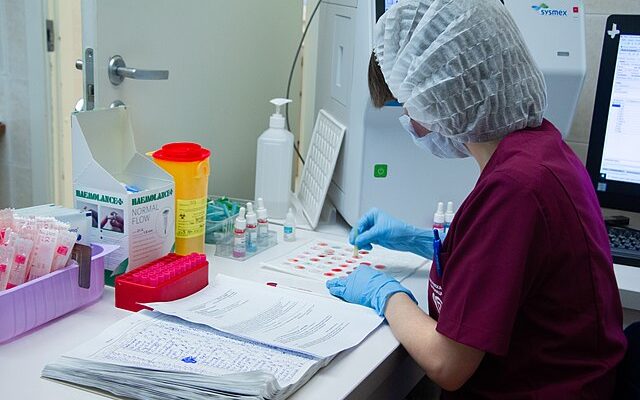Dementia and Alzheimer’s are diseases scientists, doctors, and patients struggle with on a daily basis. A new study shows that a combined blood test for cognitive decline has a 90 percent accuracy in determining whether memory loss is due to Alzheimer’s or early dementia.
This is a revolutionary breakthrough given that, in the past, neurologists and other memory specialists correctly diagnosed 73 percent of their cases with Alzheimer’s.
The study was published in the neurology journal JAMA Neurology and evaluated 1,213 people with an average age of 74 in Swedish specialty clinics.
The successful diagnosis rate is even worse for primary doctors. According to the study, primary doctors only had a 61 percent accuracy rate in their diagnosis.
The combined blood test measures blood biomarkers and evaluates early signs of Alzheimer’s
The first part of the combined blood test used to diagnose Alzheimer’s and dementia is plasma phosphorylated tau 217, or p-tau217 for short. The test is designed to measure tau protein 217, which, according to experts, is a good amyloid pathology indicator.
This means that the test looks at the tau 217 protein, which is a sign that there might be amyloid plaques in the brain. These plaques are closely related to Alzheimer’s disease. The plaques disrupt communication between nerve cells and lead to problems with memory and other cognitive actions.
This is better explained by Dr. Sebastian Palmqvist, who, in an email, wrote that “increases in p tau-217 concentrations in the blood are very profound. At the dementia stage of the disease, levels are more than 8 times higher compared with elderly without Alzheimer’s.”
Researchers combined the p-tau217 test with the amyloid 42/20 ratio to create the combined test. The amyloid 42/40 ratio measures two amyloid proteins, another biological sign of Alzheimer’s disease.
This combination of the amyloid and tau tests ended up being the “winning” combination. Together, these tests are the most predictive.
A cholesterol test but for Alzheimer’s
Dr. Maria Carrillo, chief science officer for the Alzheimer’s Association global research program, said that they’d “love to have a blood test that can be used in a primary care physician’s office functioning like a cholesterol test but for Alzheimer’s.” It is not hard to see where Dr. Carrillo is coming from given that, as previously mentioned, the study found primary physicians only have 61 percent accuracy in their diagnosis.
Carrillo went through how the combined blood test works. She explained in very simple terms that “if you don’t have amyloid present, you don’t have Alzheimer’s, but if you have elevated tau in the brain its a sign for another kind of dementia.”
Tau tangles are at the forefront of Alzheimer’s and dementia diagnosis. In Alzheimer’s, tau tangles build up in the part of the brain that controls memory, enabling amyloid plaques to interfere with nerve cells.
The combined blood test for Alzheimer’s and dementia is showing promising signs, but more research and further education for physicians is needed so that tests may be implemented on a daily basis.



